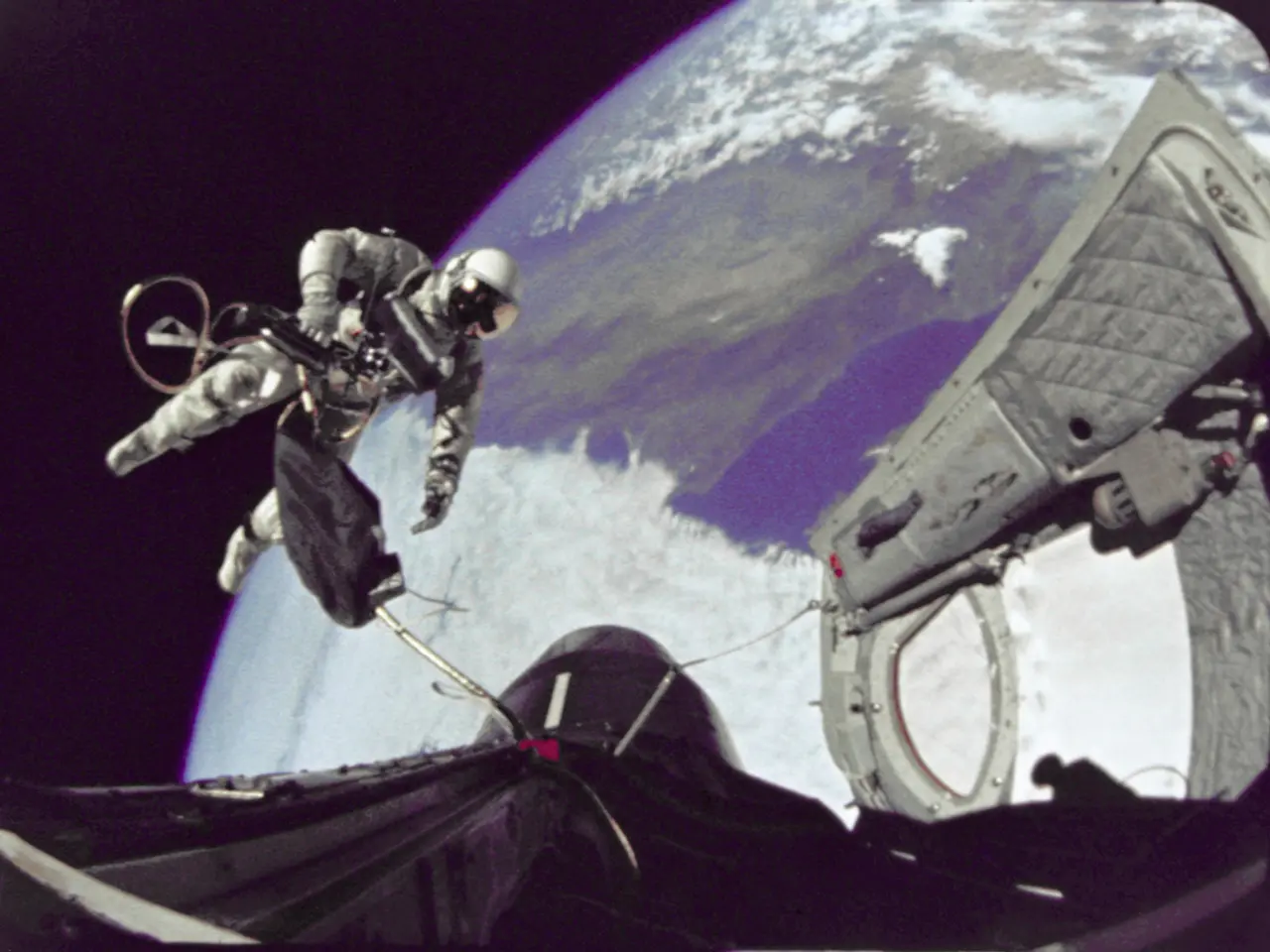Astronauts Safely Descend to Earth via SpaceX Splashdown, Concluding 5-month Stay on International Space Station Aimed at Aiding Stranded Aviators
SpaceX's Dragon capsule safely returned to Earth on August 9, 2025, marking a significant milestone as the first Pacific splashdown with NASA astronauts in 50 years. The historic event concluded a 148-day mission at the International Space Station (ISS).
The SpaceX capsule parachuted into the Pacific off the Southern California coast, following a journey that began back in March. This splashdown was SpaceX's third crewed Pacific splashdown overall, but the first with NASA astronauts since the iconic Apollo-Soyuz joint U.S.-Soviet mission in 1975.
Historically, NASA crewed returns were primarily conducted with land landings (e.g., Space Shuttle) or splashdowns in the Atlantic or Gulf of Mexico near Florida. However, SpaceX's recent shift to the Pacific Ocean coast of California aims to reduce debris risks over populated areas.
The SpaceX Crew-10, consisting of astronauts Anne McClain, Nichole Ayers, Takuya Onishi, and Kirill Peskov, were sent to the ISS to relieve the stranded test pilots of Boeing's Starliner. Meanwhile, the two NASA astronauts assigned to Starliner's botched demo, Butch Wilmore and Suni Williams, were stranded at the space station for more than nine months due to Starliner malfunctions. Butch Wilmore has since retired from NASA.
Upon their return, McClain expressed her anticipation for "doing nothing for a couple of days" once back home in Houston. She also made note of "some tumultuous times on Earth" before leaving the space station.
The astronauts departed from the ISS a day before their return to Earth. The mission marked the first time a NASA crew returned to the Pacific from space in 50 years. SpaceX had switched capsule returns from Florida to California's coast earlier this year for the same reason.
The back-to-back private crews were the first to experience Pacific homecomings. As they splashed down, SpaceX Mission Control radioed a warm "Welcome home." This historic event signifies a new era in astronaut recovery logistics, combining commercial operations with NASA's long legacy, while prioritizing crew safety with thorough recovery and medical checks immediately post-landing.
| Aspect | SpaceX Pacific Splashdowns (Recent) | Previous NASA Landings / Splashdowns | |-----------------------------|----------------------------------------------------|---------------------------------------------------------| | Location | Pacific Ocean off Southern California coast | Atlantic Ocean or Gulf of Mexico near Florida; historically some Pacific splashdowns (e.g., 1975 Apollo-Soyuz) | | Frequency | Third with crew for SpaceX, first NASA crew in 50 years | Many splashdowns during Apollo era, Space Shuttle landings on land | | Safety Measures | Autonomous capsule with multiple parachutes and quick recovery by SpaceX ships and Coast Guard | Varied by era: Apollo capsules with parachutes, Space Shuttle landed on runway | | Reason for Pacific shift | To reduce debris risk on populated areas | N/A, historical methods predate debris concerns of modern private capsules |
[1] SpaceX's Crew-10 Returns to Earth in Historic Pacific Splashdown (NASA, 2025) [2] Apollo-Soyuz: The First Joint Space Mission (NASA, n.d.) [3] SpaceX's Dragon Capsule Completes Historic Pacific Splashdown (The Verge, 2025) [4] SpaceX's Pacific Splashdown: A New Era for Astronaut Recovery (Wired, 2025) [5] NASA Astronauts Return to Earth After Record-Breaking Mission (CNN, 2025)
- The historic Pacific splashdown by SpaceX's Crew-10, marked a significant shift in astronaut recovery logistics, combining commercial operations with NASA's long-standing legacy, whilst prioritizing crew safety.
- Unlike previous NASA crewed returns primarily conducted with land landings or splashdowns in the Atlantic or Gulf of Mexico near Florida, SpaceX's recent shift to the Pacific Ocean coast of California aims to reduce debris risks over populated areas.
- The first Pacific splashdown with NASA astronauts in 50 years, occurring on August 9, 2025, signaled a new era in space travel, as the economy, science, and technology sectors stepped closer to space-and-astronomy breakthroughs and general news milestones.




